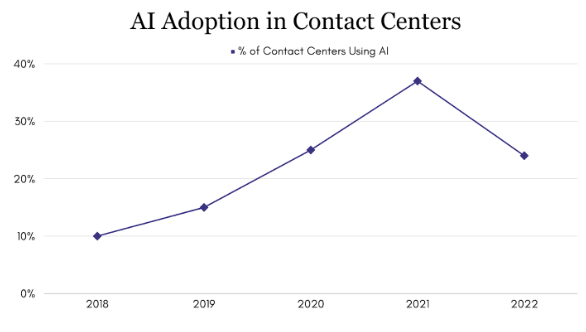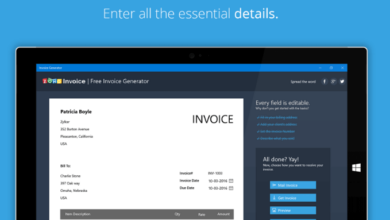Transforming Customer Experience with Integrated Call Center Solutions

One of the most challenging aspects faced by company owners is how call center staff utilize their time. With the current system, call center professionals are involved in the distribution of resources. Additionally, they are responsible for reallocating resources to different divisions of the business. These tasks can be time-consuming. Staff could better utilize this time to focus on essential tasks that directly enhance customer satisfaction.
Customer satisfaction is vital for the success of any business. But, with 73% average customer satisfaction scores in the U.S., call centers have significant room for improvement. Call centers must embrace integrated, digital-first solutions. This is to meet rising consumer expectations for seamless, personalized interactions.
This is where blended call center solutions play a vital role. Companies are known to use integrated solutions to automate inbound and outbound campaigns. This ensures that the call center is used at maximum capacity. Thanks to advanced technology, call centers now have access to better features such as:
- Call transfer
- Call barge-in
- Intelligent dialer function
- Live reporting
- Analytic reports
- Agent extensions
The Need to Transform Call Center Operations
Traditional call centers rely heavily on voice calls. Often, they have limited integration of digital channels and tools. This fragmented infrastructure struggles to meet rising consumer demands for seamless, consistent service. And they want it across every channel.
Consider that:
- 71% of consumers now expect companies to deliver personalized interactions.
- However, 76% express frustration when inconsistent experiences fail to meet their high standards.
- 65% would switch brands for better customer experience.
This significant disparity emphasizes the urgent need for transformation. Call centers anchored in legacy systems essentially turn away business. This is due to their disconnected experiences.
And while call volume isn’t declining, digital channels are ballooning. An additional 45 billion customer service messages are expected by 2023.
The contact center must be the connective tissue binding channels into a cohesive customer journey. Teams Contact Center – Microsoft allows natively integrating voice, chat, email, SMS, and messaging channels onto Microsoft Teams. This empowers agents by providing them with a complete customer context within a familiar interface, enhancing efficiency.
To effectively navigate this complex landscape, call centers require integrated systems equipped with AI and automation to:
- Unlock a singular view of customer interactions across channels.
- Equip agents with complete context for personalized service.
- Scale efficiently as digital traffic grows.
- Because experience consistency matters: 73% of customers point to integration as extremely important.
Strategies for Integration
Transitioning to integrated systems calls for strategies focused on continuity and relevance. It should apply across touchpoints.
Unify Platforms and Channels
Consolidate voice, email, live chat, SMS, and social media onto a single platform. This omnichannel approach provides continuity for customers and complete context for agents. Cloud architectures efficiently tie these channels together.
Implement AI Tools

Virtual assistants use natural language processing to handle high-volume routine queries. For complex issues, they transfer customers to human agents. At the same time, they are recording interaction histories for reference. AI also draws insights to recommend knowledge articles or product suggestions to agents during calls.
Centralize Data
Building a unified data layer makes every interaction more relevant. This happens by applying intelligence across touchpoints. Customer analytics identify pain points and opportunities to optimize experiences. CX metrics also quantify integration successes.
This combination empowers agents with comprehensive views. They no longer have to ask customers to repeat information across disconnected engagements. They can focus on providing informed, proactive service.
The result? Companies with robust omnichannel customer engagement experience increased customer lifetime value, with 89% reporting such improvements.
Overcoming Key Challenges
Transitioning to integrated systems reveals common barriers related to processes, technology, and personnel.
| Challenge | Solution |
| Legacy Systems | Audit systems for consolidation opportunities. Cloud solutions enable scalability. |
| Data Silos | Standardize data inputs and build a unified CRM repository. |
| Agent Resistance | Demonstrate benefits and provide extensive training to align skills. |
For example, a company adopted cloud-based platforms. They did this to break down informational silos between systems. After system consolidation and agent training on new tools, customer satisfaction improved by 10%.
Read also Streamline Your Invoicing Process with Top 10 Invoice Generator Software
The Impact on Customers and Business
When implemented correctly, integrated call center solutions yield measurable benefits, including:
- More responsive issue resolution
- Higher first-contact resolution ratios
- Reduced handle times and call transfers
This directly strengthens subjective satisfaction metrics. Commonly used metrics are customer effort scores and net promoter scores.
Enhancing CX also delivers financial results, through increased efficiency, customer retention, and revenue. Excellent customer service providers grew revenues 4-5 times faster than competitors.
Preparing Systems for the Future
The call center landscape will continue advancing with technologies like:
Artificial Intelligence
AI is increasingly prevalent worldwide across various industries. In contact center solutions, it is used to power increasingly personalized and proactive service. This is achieved through machine learning and sentiment analysis capabilities. However, AI is currently best applied to answer a customer’s simple problems and questions.
Internet of Things (IoT)
The Internet of Things is used to refer to sensors and other devices that can connect to the web. These help gather customer data via connected devices and preempt service needs.
To leverage these innovations, call centers should adopt open architecture platforms. It means their stack should easily integrate with modern apps and third-party capabilities.
While emerging technologies hold promise, the fundamentals remain focused on customers. Call centers must continuously reimagine their processes. This should involve implementing integrated systems focused on providing seamless customer journeys.
Frequently Asked Questions
How do integrated call center solutions improve customer experience compared to traditional methods?
Integration enables true omnichannel engagement. It enables context shared between channels to boost relevance and personalization. Intelligent correlations also help agents address issues faster and more accurately.
What are the key challenges businesses face when implementing integrated call center solutions? And how can they be addressed?
The following factors are common obstacles that impact continuity:
- Legacy systems
- Data silos
- Agent resistance to change
Here are ways that can help overcome these barriers:
- Conducting capability audits
- Investing in cloud platforms
- Centralizing data
- Change management
How can businesses measure the success and ROI of their integrated call center solutions?
Key metrics, such as the following, can assist in quantifying improvements in the call center:
- Customer satisfaction
- Wait times
- Call resolution ratios
- Containment rates
At the business level, ROI can be measured through factors such as revenues, customer retention, and cost savings resulting from improved efficiency.




